ARS ELECTRONICA in the KNOWLEDGE CAPITAL

Since its invention, computers have been used in various ways as a technology to create play and playful experiences.
The concept of the "algorithm", as an important rule for interface and computer programming born from this technology, has created play such as games, and now beyond computer technology, it has begun to be adopted in education, society, and creative fields.
Daily tous les jours installs playful interactive play equipment and changes a city to a place where people can participate. Jun Fujiki shows the possibility of new play born from a computer by making a game with its own algorithm.
Play is one of the most important behaviors through which humans acquire new knowledge, skills, and form relationships with other beings. In this exhibition, we focus on the meaning that modern play and playfulness bring to society. These works propose new education through play, inviting new forms of participation in society.

Daily tous les jours (CA)
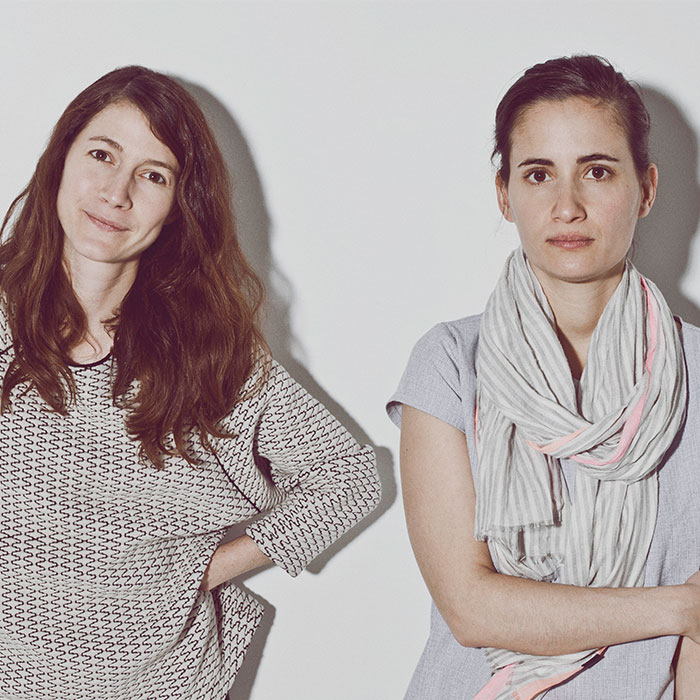
The art and design studio founded by Melissa Mongjat and Mouna Andraos based in Montreal, Canada.
Daily tous les jours plays with extending the concept of the everyday. Their numerous works and installations of large-scale interactive works rewrite normal rules of interaction, causing transformation of public space and behaviour. The works promote new modes of play and narrative between members of the public as they move through spaces such as parks and squares.
Musical Shadows creates a shared experience between passersby in a public square. Sound is produced by shadows falling onto a panel placed on the ground. Visitors generate spontaneous musical sessions within moments of unexpected collaboration with their own shadows and each other.
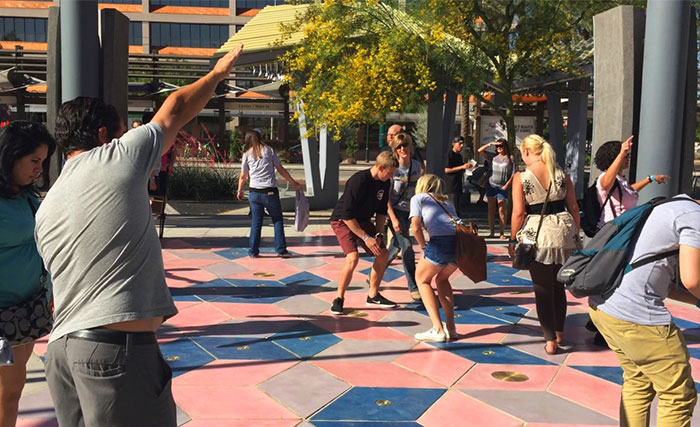
Jun Fujiki (JP)
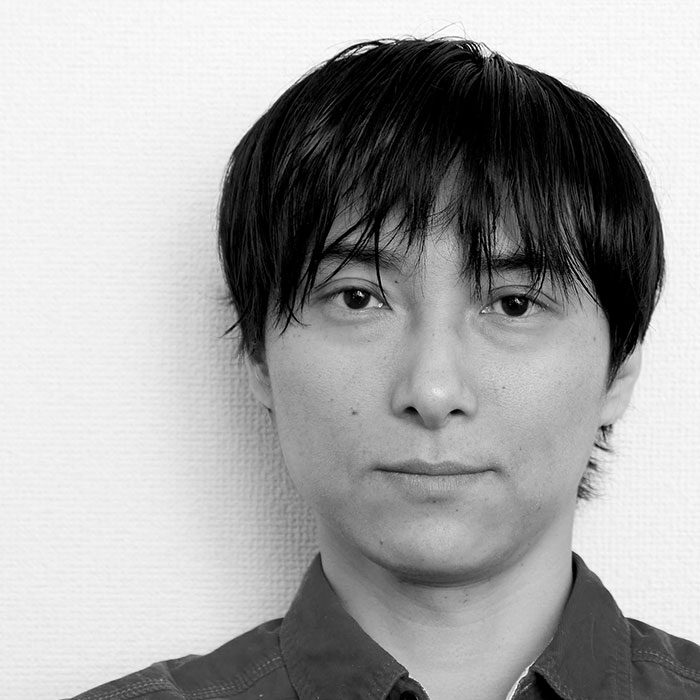
He creates interactive works using original programming / algorithms to explore the spatial perception and physical sensation of human beings. By blurring the boundaries between real and virtual, the audience can experience new physical principles and points of view through the play of his works.
Fujiki's projects have been awarded Honorary Mentions in the Prix Ars Electronica, for works in the Interactive Art category in 2008, and the Hybrid Art category in 2012.
P055E5510N is a game-like work that people find their own character that they are manipulating from among the large number of moving characters, and guide it to a flag. There are multiple versions of this work. In each version, the viewer experiences different types of possession of the character by moving characters in the screen.
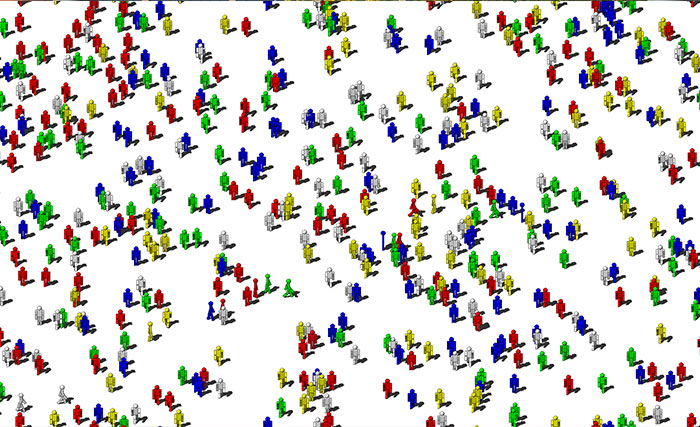
OLE Coordinate System is a game-like work in which characters do not follow physical laws. Rather, they wander within an Escher-like illusion of 2-dimensional representations of 3-Dimensional space. The work allows the viewers’ point-of-view, or coordinate system, to determine the character's interactions with simple objects such as blocks and stairs. The title OLE Coordinate System means "my own coordinate space".
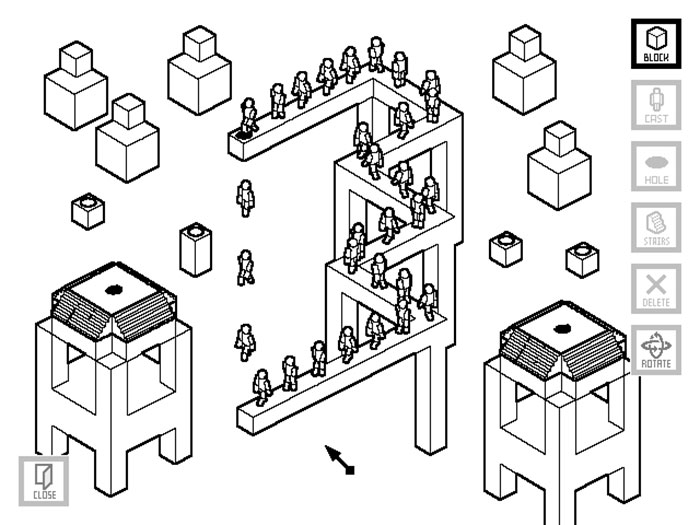
Constellation is an art work in which people, dogs, birds, ground and so on emerge from a point cluster placed in the space by visitors. Depending on the positional relationship of the placed points, the shape born from the point cluster automatically repeats generation, disappearance, transformation, and deformation.
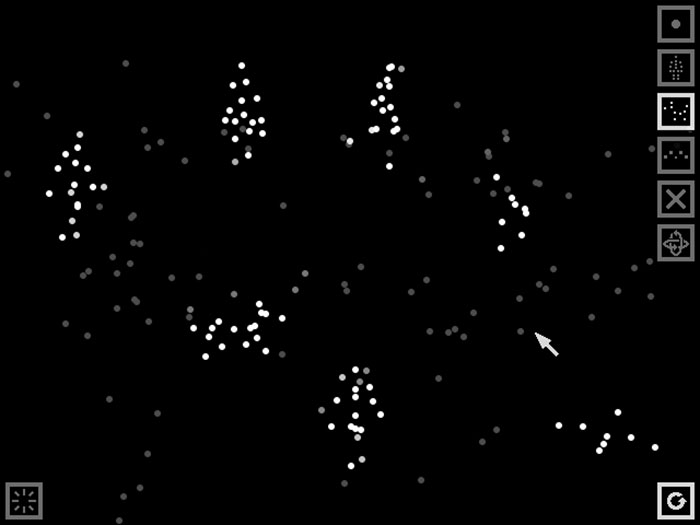
.PET 24 is an art work in which virtual life is born from a point cluster. There are 24 points on a screen. A symmetrical and balanced skeleton is found out from a position of the viewpoint, and a virtual life is generated. When the life span of 24 seconds runs out, they return to static normal points, and a virtual life with another skeleton is born. When the viewpoint changes by operation of visitors, the arrangement of points change and the shapes of virtual life also changes.
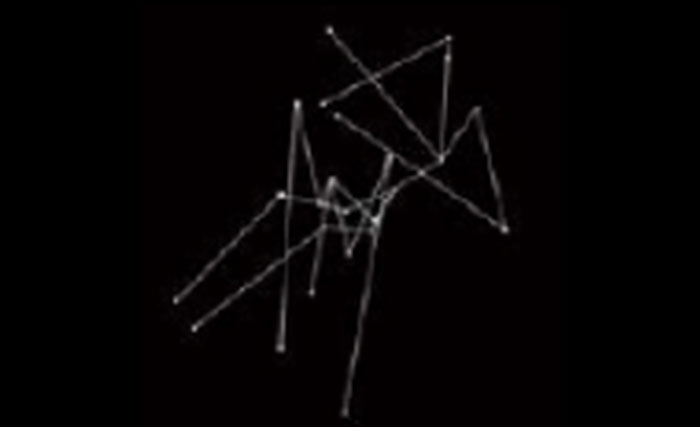
Ars Electronica Futurelab
Established in 1996 as an R&D department of Ars Electronica. It has the function of think-tank and studio. The Futurelab realizes projects by thinking the future from inside and outside of Ars Electronica.
The FLOWER OF TIME is a participatory installation that allows us to visualize collective ideas about an image about time and a way to use it.
Clock hands with different rotation speeds, such as 1 minute, 1 hour, 1 day, are mounted on the wall.
Petals around the axis of each device express the visitors' ideas of 'time killing' with each speed of time.
The flowers made by visitors will reveal that, depending on an individual and situation, their sense of time is different and elastic.
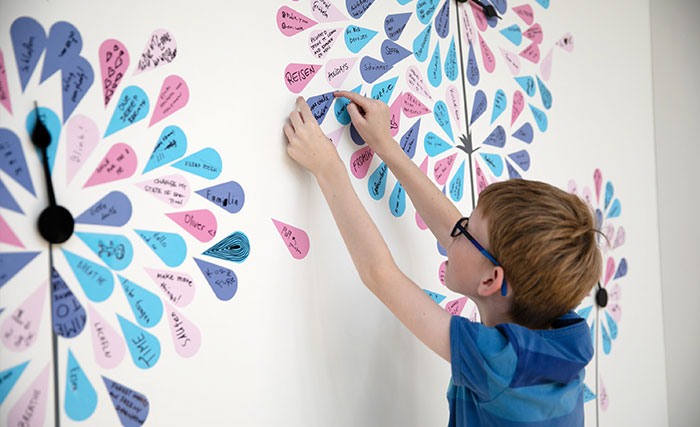
Ars Electronica
Ars Electronica is a cultural institute for media arts, located in Linz, Austria. Ars Electronica consists of 4 departments, the “Ars Electronica Festival” for art, technology and society held in every September, “Ars Electronica Center” as museum of the future, “Prix Ars Electronica” international competition for media arts and “Ars Electronica Futurelab” as an R&D function. Many Japanese creators participate in their global activities.
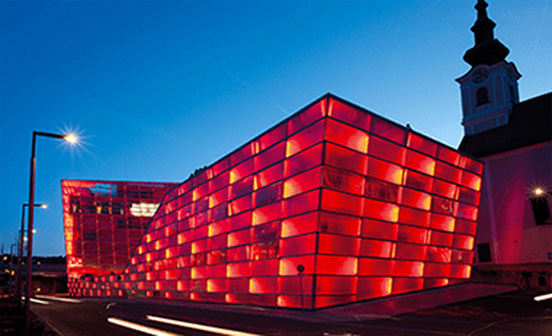 Ars Electronica Center
Ars Electronica Centerphoto: Nicolas Ferrando,Lois Lammerhuber

Kyoko Kunoh(AT/JP)
Kyoko Kunoh is an artist and a researcher at Ars Electronica Futurelab.
She has extensively created art works in the field of interactive art. Her key activities across a wide range of fields include directing in the public and commercial space, design of exhibit products, and joint projects with companies and universities.









